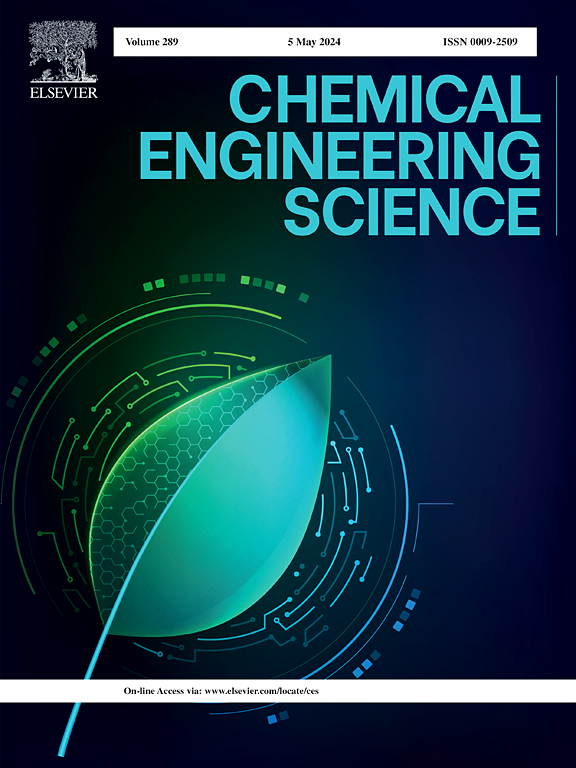双钙钛矿太阳能电池Cs2AgBiBr6的镨掺杂和聚噻吩表面钝化
IF 4.3
2区 工程技术
Q2 ENGINEERING, CHEMICAL
引用次数: 0
摘要
无铅双钙钛矿太阳能电池,特别是Cs2AgBiBr6,已经成为追求环境可持续光伏发电中有毒铅基钙钛矿的重要替代品。他们的设计和制造解决了对无毒,稳定的太阳能电池材料的关键需求,这些材料可以部署在从建筑集成光伏到便携式电子设备的各种应用中。本研究提出了一种优化的器件结构,将聚(3-己基噻吩)(P3HT)作为无掺杂的疏水空穴传输材料与镨掺杂的Cs2AgBiBr6结合在一起,以克服宽带隙和高缺陷密度的固有挑战。综合表征证实,Pr掺杂使带隙从2.15 eV减小到1.93 eV, P3HT钝化使晶粒尺寸增大到37.7 nm,位错密度降低到6.51 × 1016 cm−3。优化后的器件的功率转换效率为3.98 %,比未掺杂的器件(3.46 %)有显著提高,在环境条件下1,300 h后具有优异的稳定性,保持初始PCE的95 %。这些结果经过了电流电压测量、缺陷密度分析和运行条件下的长期稳定性测试的严格验证。这项工作为开发适合室外和室内光伏系统实际应用的高性能无铅钙钛矿太阳能电池建立了一条可行的途径,标志着商业上可行的、环保的太阳能技术的重要进步。本文章由计算机程序翻译,如有差异,请以英文原文为准。
The improvement in double perovskite solar cells Cs2AgBiBr6 by the praseodymium doping and surface passivation of polythiophene
Lead-free double perovskite solar cells, particularly Cs2AgBiBr6, have emerged as crucial alternatives to toxic lead-based perovskites in the pursuit of environmentally sustainable photovoltaics. Their design and fabrication address critical needs for non-toxic, stable solar cell materials that can be deployed in diverse applications ranging from building-integrated photovoltaics to portable electronic devices. This study presents an optimized device architecture combining poly(3-hexylthiophene) (P3HT) as a dopant-free hydrophobic hole transport material with Praseodymium-doped Cs2AgBiBr6 to overcome inherent challenges of wide bandgaps and high defect densities. Comprehensive characterization validates the enhanced performance, with Pr doping reducing the bandgap from 2.15 eV to 1.93 eV and P3HT passivation increasing grain size to 37.7 nm while lowering dislocation density to 6.51 × 1016 cm−3. The optimized devices demonstrate a power conversion efficiency of 3.98 %, a significant improvement over undoped counterparts (3.46 %), with exceptional stability retaining 95 % of initial PCE after 1,300 h under ambient conditions. These results are rigorously validated through current–voltage measurements, defect density analysis, and long-term stability testing under operational conditions. The work establishes a viable pathway for developing high-performance lead-free perovskite solar cells suitable for practical applications in both outdoor and indoor photovoltaic systems, marking an important advancement toward commercially viable, eco-friendly solar technologies.
求助全文
通过发布文献求助,成功后即可免费获取论文全文。
去求助
来源期刊

Chemical Engineering Science
工程技术-工程:化工
CiteScore
7.50
自引率
8.50%
发文量
1025
审稿时长
50 days
期刊介绍:
Chemical engineering enables the transformation of natural resources and energy into useful products for society. It draws on and applies natural sciences, mathematics and economics, and has developed fundamental engineering science that underpins the discipline.
Chemical Engineering Science (CES) has been publishing papers on the fundamentals of chemical engineering since 1951. CES is the platform where the most significant advances in the discipline have ever since been published. Chemical Engineering Science has accompanied and sustained chemical engineering through its development into the vibrant and broad scientific discipline it is today.
 求助内容:
求助内容: 应助结果提醒方式:
应助结果提醒方式:


